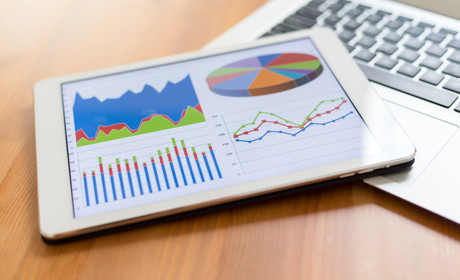
One month after stopping the publication of the print newspaper, The Indpendent reports its newly digital-only operations have doubled in size, with an editorial staff of 90 and counting.
Christian Broughton, editor of The Independent, said the organisation was initially planning for around 25 people coming across from the print team to digital, but took 40 staff in the end. The team will continue to expand both in London and abroad.
The Independent is also planning on launching InfoLab in the following weeks, a new part of the site focused on data journalism.
"If you want to be talking to people on a mobile platform, you need to find ways of talking about complex news stories that work on small screens, and numbers are really effective for that," said Broughton.
"You just need to look at Twitter [for] little graphics that summarise stories to see how well they travel and to see how people like to share those. It's a really good thing for small screens, and it's very much part of the Independent's core identity."
When the print Independent started featuring infographics on the front page in the early 2000s, the editions with data journalism as the splash sold more copies, he recounted.
InfoLab will become "an identifiable part of the site" where data stories will be featured. And while there are specialist journalists in the newsroom who will focus on InfoLab, Broughton believes being able to tell a story with data should now be part of the skillset of every aspiring digital journalist, as both the tools for the job and the readers' exceptions are shifting.
"If you had spoken to journalism lecturers some years ago they may have told you that it's always better to refer to 'almost one in five' rather than '18.5 per cent,' well now people really like specific information, so they like to know it's 18.5 per cent."
The Independent has trained staff across all teams to be able to use the tools available to work with data in the newsroom, both for creating charts for storytelling and for understanding analytics.
"One of the great things about digital is you can see the audience response in real time, you can see people engage with your story on Twitter, you can see analytics boards, you can see dwell time.
"And when you see that people are taking your journalism seriously and that it's having an impact, of course all journalists are pleased by that."
The Independent has also kept the newspaper's spirit alive through its Daily Edition app, which launched in February and aims to maintain a print-like reading experience save for "the ink on your fingers".
Broughton told Journalism.co.uk the number of subscribers to the Independent Daily Edition app is already almost double that which the print newspaper had.
The app was designed to be a curated, finite reading experience with a layout similar to the paper, and costs readers £12.99 a month to access.
Canadian news organisation La Presse took a similar approach at the end of last year, when the daily print newspaper stopped publishing and readers were encouraged to start using the La Presse+ tablet app.
Publisher Guy Crevier told Journalism.co.uk in March the tablet is the future for La Presse, as the number of unique devices that connect to the app on weekdays has surpassed the historical print circulation peaks of the newspaper.
The Independent's digital audience has grown by a third in the last 12 months, and the site is profitable, expecting a 50 per cent revenue growth this year.
Readers of the Independent Daily Edition have been vocal about their experience using the app, explained Broughton, and their feedback combined with analytics data will inform future updates and features within the app.
"Analytics is one of the great empowering differences between digital journalism and print journalism, you do get fantastic information coming back to you every day," he said.
Free daily newsletter
If you like our news and feature articles, you can sign up to receive our free daily (Mon-Fri) email newsletter (mobile friendly).











